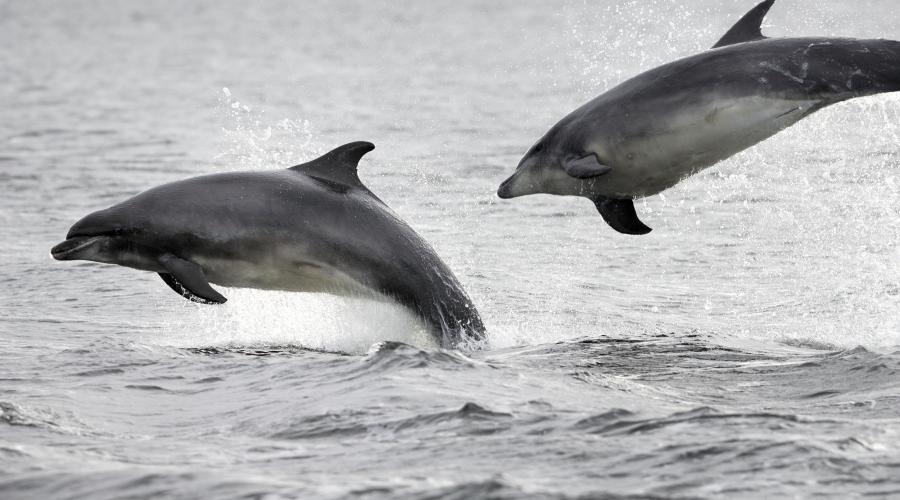
Dolphins, whales and porpoises
The waters around Scotland are among the finest in Europe for seeing dolphins, whales and porpoises, collectively known as cetaceans.
More than 20 cetacean species can be seen in Scottish waters, but seven species are relatively common close to our coasts:
- bottlenose dolphin
- harbour porpoise
- minke whale
- white-beaked dolphin
- Risso’s dolphin
- common dolphin
- orca (killer whale)
Harbour porpoise
The harbour porpoise is the
- smallest cetacean found in Scottish waters
- most abundant cetacean in inshore waters
Harbour porpoises tend to be seen alone or in small groups. They may form larger groups where there’s an abundant food source. They feed mainly on small fish species as well as squid, octopus and shellfish.
Harbour porpoise range widely around the coast of Scotland. The west of Scotland is home to a higher density of harbour porpoise than is found elsewhere. The Inner Hebrides and the Minches SAC was created to protect the animals in this region.
White-beaked and common dolphins
White-beaked dolphins are found throughout northern European waters. In Scotland, they’re most often seen in the Minch and to the north of the Outer Hebrides, in the outer Moray Firth and off the Aberdeenshire coast.
Common dolphins tend to be summer visitors to Scotland, and are mainly recorded here between May and October, when food is most abundant. They can sometimes be seen in large schools and are highly acrobatic, often leaping clear of the water.
Orca

An orca in Orkney waters. (C) Kim McEwen
Orcas (killer whales) are the largest species of dolphin. Their distinctive black-and-white coloration makes them easy to recognise. Orcas can be seen in coastal waters off the west coast of Scotland and in the Northern Isles. Some groups of orca feed on fish, while others target seals.
Threats to cetaceans
Threats include:
- chemical pollution – when ingested, chemicals can build up in the blubber
- entanglement – minke whales, in particular, may become entangled in nets, ropes and lines
- collisions – with shipping vessels, marine renewable devices and other infrastructure
- noise pollution – noise made by marine traffic, seismic testing for oil and gas, military activities, construction, acoustic deterrent devices and other sources can cause injury and disturbance
- disturbance – while it’s great to see dolphins and whales from a boat, too much attention from boats can disturb and displace them from feeding areas
Protection of dolphins and porpoises
Find out about dolphins, whales and porpoises as protected species.
Learn about licensing for dolphins and porpoises.
The Scottish Marine Wildlife Watching Code explains how best to watch marine wildlife with minimal impact on the animals.
Planning a marine wildlife tour? Choose an operator accredited by the WiSe (Wildlife Safe) Scheme.
Marine Scotland has published guidance on The protection of Marine European Protected Species from injury and disturbance: Guidance for Scottish Inshore Waters
Read our guidance for planners and developers on protected animals.
Report a sighting
You can report sightings of live cetaceans to the Sea Watch Foundation, Whale Track or to your local biological recording scheme.
To report an injured or stranded live animal, call either:
To report a dead stranded marine animal, call the Scottish Marine Animal Stranding Scheme on 07979 245 893 or 01463 243 030.






